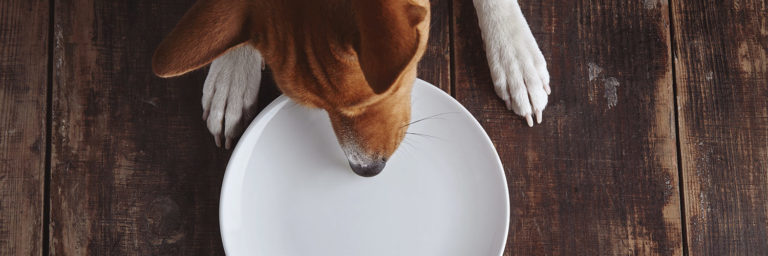How to Care for Your Dog – A Comprehensive Guide to Basic Dog Care Tips

Contents of Article
They say that dog is a man’s best friend.
Do you agree?
What could be better than sharing your life with a faithful companion who never judges and who always sees the best in you?
We can’t think of anything.
Can you?
There is just something wonderful about coming home after a long day at work to find your best friend waiting for you, ready to help you relax and unwind.
I think you’ll agree with me when I say:
Owning a dog is a privilege and a wonderful thing.
I think you’ll also agree, however, that caring for a dog is not without its challenges.
As a dog owner, it’s your responsibility to know what your dog’s needs are and to meet them. This includes everything from basic dog training and a healthy dog diet to veterinary care and more.
Every dog is different but basic dog care is the same for most dogs.
In this article, you’ll find a wealth of dog information including tips for how to care for a dog. You’ll receive valuable tips for all stages of your dog’s life from puppy to senior dog, including nutrition, grooming, and healthcare tips along the way.
So, if you’re ready to delve into the world of dog care, keep reading!
Let’s begin with a basic dog supply checklist:
Dog Supply Checklist
Before you even bring your new friend home, you should prepare a space for him and make sure that you have all of the necessary dog supplies. This is especially important if you’re a new dog owner.
You don’t necessarily need to spend a fortune on dog stuff, but there are some basics you should buy so you can properly care for your pup.
Here are some of the dog supplies you’ll need:
- Comfortable dog bed or pillow
- Dog crate or carrier
- Dog collar and/or harness
- Dog leash
- Dog toys (an assortment)
- Grooming supplies
- Food and water bowls
- Dog food storage container
- Dog treats
- High-quality dog food
These are the most basic dog accessories and supplies you’ll need when you bring your canine companion home for the first time. Once you have all of these supplies, your next step is to set up a place in your home that your dog can call his own.
Here’s how to do it:
First, choose a room (or part of a room) in your house where you have a little extra space to set aside for your pup. It should be a room that doesn’t receive a lot of foot traffic throughout the day, but it shouldn’t be secluded either.
Section off a part of the room using a puppy playpen or use a baby gate to block the door if you plan to give your dog free reign over the entire room.
Next, set up your dog crate or carrier – be sure to line it with a dog bed or with a blanket or towel for comfort. If you’re bringing home a new puppy, choose something easy to clean in case he has an accident.
Once your puppy crate is set up, place your dog’s food and water bowls nearby as well as a box for his toys. Everything your puppy needs should be within reach in this area.
When you have your dog’s area all set up, all that’s left is to add your dog!
If you’re bringing home a new puppy rather than adopting an adult dog, there are some additional preparations you may need to make.
Also Read: The Complete List of Dog FAQs
Keep reading to learn more about bringing a new puppy home:
Bringing Home a New Puppy
Before you actually bring your new puppy home, you need to puppy-proof your home.
Make sure that all food, cleaning products, and other potentially dangerous substances are put away and keep small objects off the floor. Try to go through your house and view things through your puppy’s eyes to identify potential dangers.
As you prepare to bring your new puppy home, you should think about the following:
- How are you going to transport him home?
- Who is going to take care of feeding the puppy?
- When and how are you going to train your new puppy?
- Do you need to introduce your puppy to other pets?
- If you have children, have you taught them how to handle the puppy?
Caring for a puppy is a big responsibility and not one you should take on lightly.
In addition to preparing your puppy’s space, you also need to prepare your family. Have a family meeting to talk about who will take on which aspects of the puppy’s care including feeding, grooming, and training. If you choose to share the responsibility, decide how the tasks are to be divided.
When you actually bring your puppy home, you should be prepared to give him some time and space to acclimate to his new surroundings.
For the first day, it may be best to limit interaction with the puppy so he can rest and relax. Give your puppy some time to explore his area but don’t force him to be too active or social if he doesn’t want to.
Though you should give your puppy time to acclimate before you really start training, it’s never too early to start enforcing basic house rules.
Try to establish a daily feeding schedule for your puppy and get in the habit of taking him out as often as possible. Make sure that you take your puppy to the same area of the yard each time so he learns what is expected of him when you let him out – this will make crate training easier when it comes time for it.
It might be too early for obedience training at this point as well, but you should be conscious of the way you react to and interact with your puppy to avoid accidentally reinforcing unwanted behaviors.
For example, your puppy might whine a little the first night if he isn’t used to being alone. Avoid the temptation to run to him and coddle him – it will only teach him that whining gets him the attention he wants and it will become a bad habit.
You can apply this principle to other things as well, preparing your puppy for future training.
When it comes time to introduce your puppy to children or other pets, be sure to supervise the interaction and go slow – if your puppy seems overwhelmed or frightened, cut the session short and resume it later.
For more information, check out our new puppy guide – it covers everything from finding a responsible dog breeder and picking out a healthy puppy to bringing your puppy home and introducing him to your family.
Once you’ve brought your puppy home, the real work begins.
Before we get into the various aspects of caring for a puppy, let’s talk about something equally important:
Spaying and neutering.
Should You Spay or Neuter?
If you’ve ever watched The Price is Right, you’ve probably heard the following advice:
“Help control the pet population. Have your pets spayed or neutered.”
While this advice has become somewhat cliché as part of the show, the advice is still sound. Having your dog spayed or neutered is important for a number of reasons.
First and foremost, having your dog spayed or neutered will reduce the risk for unwanted litters which, in turn, helps to decrease the number of pets that end up in shelters each year.
Think about it:
If your dog accidentally got pregnant, would you have the means to care for an entire litter of puppies?
For many people, the answer is “No” and this is how entire litters of puppies end up in shelters.
Not only does spaying a dog or neutering a dog reduce the risk for unwanted litters, but it could benefit your dog’s health as well.
Having a female dog spayed reduces her risk for breast cancer and uterine infections, especially if you have it done before her first heat. Breast cancer is fatal in about 50% of cases and spay surgery is the only way to truly prevent it.
In male dogs, neuter surgery protects him against testicular cancer – it may also provide behavioral benefits. Having your male puppy neutered will reduce urine marking behavior and it may reduce aggression. Altered male dogs are also less likely to roam or to make attempts at escaping the house or yard in search of a female companion.
When it comes to spay and neuter surgery, many dog owners are concerned about the cost.
How much does it cost to spay a dog? What is the average dog neutering cost?
Veterinary services can become expensive, especially when you include things like general anesthesia and surgery. You’ll be glad to know, then, that there are plenty of low cost spay and neuter clinics out there – you just have to find them.
To find a spay neuter clinic in your area, contact your local shelter or rescue. Many shelters also function as spay and neuter clinics, offering low cost neuter and spay surgery to the public.
Because these clinics make the cost of spay and neuter surgery so affordable, there is really no good reason not to do it.
Before moving on, however, I want to address a common question – do you think spaying or neutering is cruel? Some dog owners do.
The idea of rendering your dog sterile may sound unpleasant, but most dog owners agree:
The advantages outweigh the disadvantages.
Breeding dogs is not something that should be taken lightly and, unless you plan to breed your dog, there is no good reason not to have him or her altered. Spaying a female dog greatly reduces the risk for breast cancer and uterine infections while neutering a male dog reduces the risk for testicular cancer.
And don’t forget about the behavioral benefits!
In the end, it’s your choice but you need to think about both sides of the issue and consider the implications for your dog when making your decision.
Enough about that – let’s move on.
Next, we’re going to talk about another important aspect of caring for your new puppy:
Crate training.
Housetraining a Puppy
Some dog owners think that keeping a puppy in a crate is cruel. Here’s what we have to say about it:
A crate is simply a means of keeping your puppy contained.
Having a crate is a great way to keep your puppy out of trouble when you can’t watch him yourself. It also reduces the risk for him having an accident somewhere else in the house.
But if you do it right, puppy crate training can provide another benefit:
Your puppy will come to think of his crate as his own special place – a spot where he can retreat and relax if he wants to. A place he feels safe.
The key to dog crate training is to work with your puppy from an early age, helping him to form a positive association with the crate from the very beginning. And never – NEVER – use the crate as a form of punishment.
When crate training a puppy, there are two important things you must do:
Give your puppy plenty of opportunities to do his business outside.
Keep your puppy in the crate when you can’t watch him.
Consistency is key to all forms of dog training, but especially for housetraining a puppy. You need to keep your puppy with you at all times when you’re home and take him outside every hour or two so he has a chance to do his business.
If you can’t watch your puppy, he should be in his crate so he doesn’t have an accident in the house.
It’s really as simple as that!
For more detailed instructions on crate training a puppy, check out our comprehensive crate training guide. For now, however, here are the answers to some common questions:
How big should a puppy crate be?
For training purposes, your puppy’s crate should only be large enough for him to comfortably stand up, sit, turn around, and lie down. The goal is for your puppy to view his crate as his den – if he views the crate this way he’ll be less likely to soil it. As your puppy grows, you may need to upgrade to a larger crate, but follow the same rule of thumb for determining the proper size.
How long can you keep your puppy in the crate?
You should never keep your puppy in the crate for longer than he is physically capable of holding his bladder and bowels. To get a general idea for how long your puppy is able to do this, take his age in the number of months and add one. For example, a four-month puppy is usually able to go for about 5 hours in the crate. You should never crate your dog for more than 8 or 9 hours at a time.
How do you train a dog not to pee in the crate?
If you’re successful in making your puppy view the crate as his den, you won’t have to teach him not to pee in it – it will be natural for him. Dogs are descended from wild wolves who have a natural aversion to soiling their dens. If your puppy views the crate as his den (making sure that it is only large enough for sleeping will help with this), he’ll be less likely to soil it.
Should you keep using the crate after training?
After you’ve crate trained your puppy, you may wonder whether to keep using the crate or not. Many dog owners choose to keep their dogs in the crate when they’re away from home but it is up to you what you choose to do. Even if you choose not to keep your dog confined to the crate, you may still want to make it available for him to use on his own. Many dogs like to sleep in their crates, so make sure it’s lined with a comfy dog bed.
Puppy potty training is one of your first responsibilities as a dog owner, but there is another aspect of training you need to think about as well:
Dog obedience training.
Keep reading to learn the basics about obedience training for dogs:
Intro to Dog Training and Resolving Problem Behaviors
Do you remember what we said in the last section about dog training?
Consistency is key.
When it comes to obedience training, this means three things:
- Be consistent about the commands you use.
- Be consistent about enforcing commands and house rules.
- Be consistent about offering rewards and reinforcement.
Dog training is a very simple process. If you take a moment to think about it, you’ll realize this:
You can train your dog to do just about anything if you’re able to teach him exactly what it is you expect him to do and if you reward him for doing it.
That’s really how dog training works!
Training a puppy or an adult dog involves choosing a command to go with a desired behavior, helping your dog identify that desired behavior, and encouraging him to repeat it on command.
To give you an idea what this looks like, consider the following training sequence for the “Sit” command:
- Start by kneeling in front of your dog, holding a treat in your dominant hand.
- Hold the treat in front of your dog’s nose so he can smell it, but don’t give it to him yet.
- Tell your dog to “Sit” in a firm, clear voice.
- Immediately following the command, move the treat forward and up toward the back of your dog’s head.
- Watch your dog’s nose follow the treat – as he lifts his nose, his bottom should lower to the floor.
- As soon as your dog’s bottom hits the floor, tell him “Good dog” and give him the treat.
Let’s break it down:
First, you start by giving your dog incentive to pay attention to you – that’s the treat.
Next, you give your dog a clear command – each verbal command you use should be easy to distinguish from other commands and, ideally, no more than one or two words.
After giving the command, lead your dog to perform the desired behavior.
As soon as your dog exhibits the desired behavior, identify it by telling him “Good dog” and then give him the reward to reinforce that behavior.
In most cases, it only takes a few repetitions of such a training sequence for your dog to identify the desired behavior and to start associating it with the command. As your dog responds to the command more consistently, you can begin to phase out the food reward so he doesn’t become dependent on it. You should keep praising him, however, and throw in some belly rubs as an alternative reward.
Now that you understand the basics of dog training, check out our dog obedience training guide to take your dog training to the next level.
As you work your way through dog training, you may find yourself dealing with certain behavioral problems. Many dog owners find themselves asking the following questions:
How do I stop my dog from barking?
How do you train a dog not to chew?
Why is my dog digging in the yard?
Though it may sometimes seem strange to you, most dog behaviors are rooted in instinct.
For example:
If you find your dog digging in the yard, it might not seem like his behavior has any purpose but to annoy you. After all, what benefit does he get from flinging dirt around and destroying your flower bed?
Think about this:
Digging is a form of activity and, if your dog has been deprived of his daily walk, a form of exercise. Dogs also dig to create a cool, comfortable place to nap in the heat of summer.
If you take a moment to examine an unwanted dog behavior, you may realize that your dog actually has a very good reason for doing it. Determining the trigger or the underlying cause for your dog’s actions is the key to resolving behavioral problems.
Keep reading to learn more about how to resolve common dog behavior problems.
Before moving on to the next aspect of dog care, let’s take a moment to talk about dog training classes.
Dog school, or obedience school, is great but you need to know how to use it properly. Sending your dog to obedience classes should not be a replacement for training him at home. And don’t think that you can get away with hiring a dog trainer and not have to do any training yourself.
Puppy training classes offer several benefits:
- They teach new dog owners how to train their dogs.
- They offer opportunities for socialization.
- They provide support and direction in dealing with problem behaviors.
Dog school is as much about teaching dog owners as about teaching dogs – if you want to be effective in dog training, you need to learn how to do it. Going to training classes may help you learn how to train your dog, but most of the work will be done at home between sessions. Unless you’re willing to work with your dog outside of class, obedience school will offer limited benefits.
And that brings us to the next aspect of dog care:
Tips for exercising your dog.
Simple Tips for Exercising Your Dog
One of your most important tasks as a dog owner is taking your dog for a daily walk.
Different breeds have different exercise requirements, but most dogs need a walk every day to work off excess energy and to keep them fit. The length and speed of the walk may vary according to your dog’s age and fitness level, but you should make it a daily habit.
Not only does a daily walk work off your dog’s excess energy, but it can also provide these benefits:
- Reduced destructive behaviors like chewing or digging
- Controlled hyperactivity and excitability
- Less night-time activity
- Fewer unruly behaviors like jumping up
- Reduced investigative behavior like knocking over trash
- Less rough play and biting during play
- Fewer attention-getting behaviors like barking or whining
For ideas on how to exercise your dog, read our guide to exercise for dogs.
Making sure that your dog gets enough exercise will reduce problem behaviors and keep your dog fit and healthy. Exercise for dogs is essential for maintaining healthy bodyweight – it also keeps his digestion regular.
Speaking of digestion, let’s talk about another important aspect of caring for your dog:
Providing him with a healthy dog diet.
Here’s what you need to know about dog nutrition:
The Basics About Canine Nutrition
Dogs are carnivores.
At least, that’s what most people think.
This statement is by no means false, but it doesn’t tell the whole truth – it doesn’t say what kind of carnivore a dog is.
Cats are obligate carnivores, or true carnivores – they lack the biological ability to digest plant matter with any efficiency and therefore must eat meat in order to thrive.
Dogs are scavenging carnivores – they are primarily meat eaters but can survive on plant matter if it becomes a necessity.
This statement alone tells you some important things about the proper diet for dogs:
- Your dog needs a diet rich in meat.
- Your dog’s diet can contain plant material, but it should be limited.
In addition to understanding that dogs are scavenging carnivores, you should also know something about their basic nutritional requirements.
An ideal diet for dogs contains a minimum of 18% crude protein and a minimum of 5% crude fat. These are the ratios for adult dogs – puppies need at least 22% protein and 8% fat.
These numbers give you some idea as to the nutritional makeup of the ideal dog diet, but you need to refer back to the definition of the scavenging carnivore to determine where exactly these nutrients should come from.
Most of the protein in your dog food should come from high-quality, animal sources – things like meat, poultry, fish, and eggs.
Plant proteins are not necessarily harmful for your dog, but they should be secondary to animal proteins. Your dog’s body is designed to digest and absorb nutrients efficiently from animal sources – plant-based foods offer more limited biological value for dogs.
Here’s what you need to know about protein:
Protein provides your dog with the building blocks for strong muscles and healthy tissues.
Though 18% is the recommended minimum for protein content in a dog diet, more is always better. The more protein in your dog’s diet, the more lean muscle mass he’ll have. Quality animal protein should be the first ingredient in any high-quality dog food.
Next comes fat.
Though you may think of fat as something you want to avoid in your own diet, it is an important part of a healthy diet for dogs. Fat provides a concentrated source of energy for dogs and it also promotes skin and coat health and supports nutrient absorption.
Similar to protein, fat should come from high-quality animal-based sources. Chicken fat, for example, is an excellent source because it is packed with nutrients and concentrated energy.
What about carbohydrates?
It should come as no surprise to you that dogs do not have any specific requirements for carbohydrates in their diet.
Remember – dogs are scavenging carnivores.
This means that they CAN eat plant foods, not that they NEED to eat plant foods.
Plant-based ingredients can provide your dog with some usable energy in the form of glucose as well as other healthy nutrients – they also provide dietary fiber to support your dog’s digestion. You need to be careful how much fiber your dog gets, however, because too much could negatively affect his digestion – aim for no more than 5% crude fiber in his dog food.
Now that you know the basics about dog nutrition, you may be asking questions like this:
What is the best dog food for adult dogs? Or the best dog food for puppies?
How do you make a choice among the different dog food brands?
What’s the difference between natural dog food, organic dog food, and other kinds of dog food?
There are no simple answers to these questions.
Though all dogs have the same basic nutritional requirements, there are some variations.
For example, small-breed dogs have very fast metabolisms so they need a diet higher in fat than most large-breed dogs. Larger dogs may require more protein to maintain lean muscle mass and they may also benefit from joint-supporting supplements.
There is one important thing you need to realize, however:
The nutritional needs of different breeds are not sufficiently different that you need to cater your dog’s diet to his breed.
What I mean is this:
If you have a Yorkshire Terrier – don’t bother buying dog food that is labeled for that specific breed. Low-quality dog food brands like Eukanuba prey on under-educated dog owners, trying to sell them products they don’t really need – products designed for specific breeds.
Keep this in mind:
While a Yorkshire Terrier’s nutritional needs may not be significantly different from those of a Shih Tzu, there are some subtle differences in nutritional requirements among breeds of different sizes and activity levels.
But we’ll get into that in another article.
For a more in-depth look at the nutritional needs of dogs in all life stages, check out our comprehensive dog nutrition guide.
Before moving on to the next dog care topic, let’s take a quick look at some frequently asked questions about dog food:
What is the best dog food for puppies?
Puppies need a diet rich in protein to support their growth and development – higher levels of fat will also provide extra energy to support this growth. You need to be careful, however, to ensure that your puppy grows at the proper rate. Small-breed puppies reach their adult size very quickly but the growth of large-breed puppies needs to be controlled. If large-breed puppies grow too fast it could predispose them to musculoskeletal issues in adulthood. The best thing to do is choose a high-quality puppy food formulated for your puppy’s breed size.
When do you switch from puppy to adult dog food?
There is no one-size-fits all answer to this question – it varies from one breed to another. Because small-breed puppies reach their adult size sooner than large-breed puppies, they may need to switch to an adult formula before they hit twelve months of age. The best rule to follow is to monitor your puppy’s growth and to switch him over to an adult formula when he reaches about 80% of his expected adult size. You can ask your vet for help if you aren’t sure when to make the switch.
What is the best dog food for senior dogs?
In the same way that a puppy’s nutritional needs vary slightly from those of an adult dog, a senior dog has slightly different needs than a younger dog. As your dog gets older, his metabolism is going to slow down – you need to decrease his calorie intake proportionally to prevent him from gaining weight. It is still imperative that your senior dog receive plenty of protein to maintain lean muscle mass, but you may want to reduce his fat intake to control his daily calorie load. Supplements like glucosamine and chondroitin in his diet may also be beneficial for joint support in his old age.
How do you safely switch to a different dog food?
If you need to switch your dog to a different food, you need to make the transition slowly to prevent digestive upset. The best thing to do is mix small amounts of the new food into your dog’s old food, making the transition over the course of about a week. Every two days or so, increase the proportion of the new food and decrease the proportion of the old food until your dog is fully transitioned onto the new product. If he develops digestive problems at any point, go back to the previous stage for another day or two until his symptoms are resolved.
Making sure that your dog gets the nutrients he needs will ensure his total body health and wellness. It will also keep his skin and coat healthy!
Keep reading to learn more about caring for your dog’s coat as well as other aspects of dog grooming:
Grooming Your Dog
When you think about dog grooming, you probably think about things like bathing and trimming your dog’s coat.
But these are just two aspects of dog grooming.
Not only do you need to care for your dog’s skin and coat, but you also need to keep his teeth healthy, his ears clean, and his nails trimmed.
When it comes to dog grooming, the easiest thing you can do is take your dog to a dog grooming service once a month or so. These services specialize in pet grooming including bathing and trimming your dog’s coat. Many dog groomers also provide additional services like nail trimming.
If you want to save some money, you can learn the basics of grooming dogs yourself.
As a general rule, you should only bathe your dog as often as needed to keep his coat clean. Over-bathing can dry out his skin and coat, causing it to become itchy or irritated.
The most important aspect of at-home dog grooming, however, is brushing your dog’s coat. Regular brushing at home will help to control shedding while also distributing the natural oils in your dog’s skin that keep his coat shiny and soft.
You should make an effort to trim your dog’s nails once every week or two, brush his teeth daily, and clean his ears as needed. If you aren’t sure how to do these things, you can always take your dog to the groomer once and ask them to show you proper technique.
Once you know the basics, you should be able to handle most of the simpler aspects of dog grooming on your own at home.
For a more comprehensive guide for each of these tasks, check out our dog grooming guide.
Now that you know a little more about keeping your dog’s skin and coat healthy, let’s go more in-depth about your dog’s health.
Here are the basics about dog health and wellness:
Tips for Keeping Your Dog Healthy
All breeds are prone to certain dog ailments.
The type of dog health issues each breed is prone to depends on a number of factors such as genetics, breeding, and care.
While you can’t always prevent your dog from getting sick, there are things you can do to keep him as healthy as possible for as long as possible.
First and foremost, feed your dog a healthy, high-quality dog food.
Second, take your dog to the vet at least once every six months.
Third, be on the lookout for dog illness symptoms and report them to your vet.
These three things seem simple enough, don’t they?
They might be a little more challenging than you would imagine. Dogs have a natural instinct to hide their pain because predators would see it as a sign of weakness.
What does this mean for you?
It means that it won’t always be obvious if your dog is sick or in pain. It’s your job to know your dog well enough that you can identify changes in behavior, as subtle as they may be, because these changes could be the only indication you get that your dog is sick.
The sooner you identify dog illness symptoms, the sooner you can get your dog the care he needs and the greater his chances of making a full recovery.
So, how do you know if you have a sick dog?
Here are some of the top signs of dog health problems to look out for:
- Bad breath or excessive drooling
- Changes in appetite
- Increased thirst or urination
- Reduced activity level
- Stiffness or change in gait
- Sleeping more or less than usual
- Coughing, sneezing, or wheezing
- Difficulty breathing
- Dry or itchy skin, increased scratching
- Sores, bald patches, or hot spots
- Digestive issues
- Discharge from the eyes or nose
There are countless different dog diseases out there, each with their own set of symptoms. In some cases, the symptoms of different dog illnesses overlap so you should make note of all of your dog’s symptoms so you can report them to your vet.
In addition to taking your dog to the vet for routine checkups and vet advice, there are a few other aspects of dog health care to consider.
For example, parasite prevention is incredibly important for canine health.
Dogs are prone to a number of different parasite infections and infestations but the most common are fleas, ticks, and heartworms. Fortunately, you can protect your dog against most parasites with a simple monthly topical or oral application.
For more information about preventing fleas, check out our ultimate guide to the best dog flea treatments.
Something else you might consider in regard to dog health is pet insurance.
Though pet insurance differs from health insurance in many ways, it is similar to your own health coverage in that it helps to mitigate unexpected medical (or in this case veterinary) costs.
Check out our guide to pet insurance for more information.
As we bring this dog care guide to a close, I want to touch on one more subject:
Caring for an aging dog.
Taking Care of Your Senior Dog
As your dog gets older, his needs are going to change.
Not only will you need to switch to a senior dog food, but you may also need to make adjustments to your old dog’s lifestyle.
As your dog gets older, it may become more difficult for him to maintain a healthy bodyweight. You can help him by switching him to a food for older dogs that is rich in protein but low in fat – you can also make an effort to keep him active with daily walks. Don’t push your dog to walk faster or farther than he is able, but try to keep him active.
In the home, keep your elderly dog comfortable by providing him with a dog bed that cushions and supports his joints. You may also need a ramp or stairs to get him in and out of the car or onto your bed, if you let him sleep with you.
For more information about caring for your aging dog, check out our guide to senior dog care.
And there you have it!
A quick look into the basics of how to care for a dog.
By no means should you consider this dog care guide comprehensive, but we hope that it gives you some valuable information about caring for your dog and piques your curiosity to learn more.
Check out our various dog care tips and guides for a more detailed overview of the various aspects of caring for a dog.
Remember, the more you know the better you’ll be as a dog owner.
Doesn’t your dog deserve the best?







